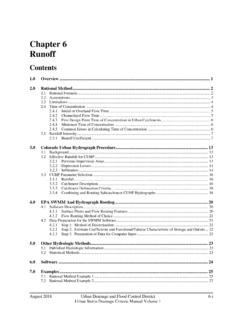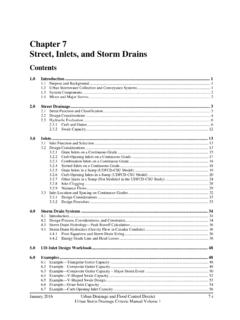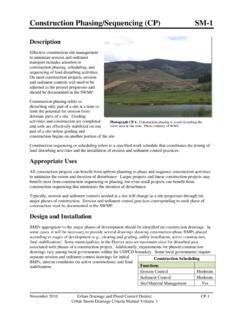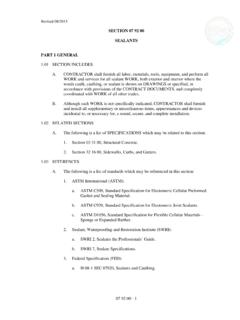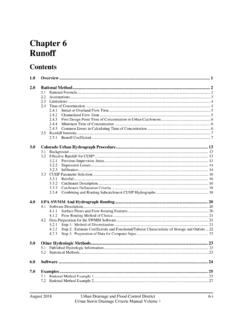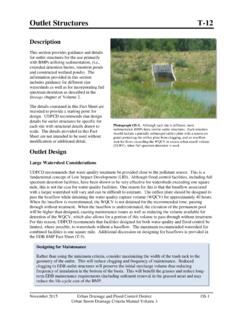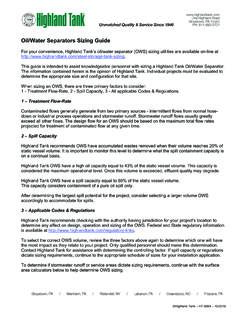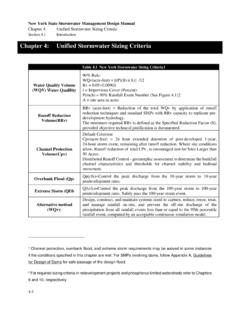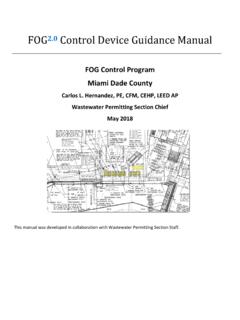Transcription of Temporary Diversion Methods (TDM) SM-8 - UDFCD
1 Temporary Diversion Methods (TDM) SM-8 June 2012 Urban drainage and Flood Control District TDM-1 Urban Storm drainage Criteria Manual Volume 3 Photograph TDM-1. This coffer dam, installed to allow grading and stabilization of the stream bank, consists of concrete blocks covered by an impermeable linear held in place by sand bags. Description Temporary Diversion Methods are used to reroute water from a stream or restrict flows to a designated portion of the stream channel to allow for construction activities to take place in the stream, along the banks or beneath the active channel. Temporary Diversion Methods are often required during the construction of detention ponds, dams, in-stream grade control structures, utility installation and other activities, including maintenance, that require working in waterways.
2 Temporary Diversion Methods include Temporary Diversion channels, pump-arounds, piped diversions, coffer dams and other similar practices. The primary purpose of all Temporary Diversion Methods is to protect water quality by passing upstream flows around the active construction zone. Appropriate Uses Temporary Diversion Methods are appropriate in situations when it is necessary to divert the flow around the area where work is being conducted. Temporary Diversion Methods vary with the size of the waterway that is being diverted. For large streams, a Temporary Diversion may consist of berms or coffer dams constructed within the stream to confine flow to one side of the stream while work progresses on the dry side of the berm.
3 For smaller streams and often for construction of dams and detention basins, a Temporary Diversion method may divert the entire waterway. For short duration projects (typically less than a month of active construction) with low baseflows, a pump and/or bypass pipe may serve as a Temporary Diversion . Whenever a Temporary Diversion is used, construction should be scheduled during drier times of the year (November through March) to the extent feasible, and construction in the waterway should progress as quickly as practical to reduce the risk of exceeding the Temporary Diversion capacity. Timing and duration of construction are primary considerations for determining the design flow most appropriate for a Diversion .
4 A sizing method that does not consider these variables is overly simplistic and can result in inflated project costs and land disturbances that provide little to no water quality benefit. Additionally, disturbing more area than necessary can result in increased erosion. Temporary Diversion method section and approach should occur on a project- and site-specific basis. For short duration projects (typically associated with maintenance of utilities and stream crossings and minor repairs to outfalls and eroded banks) constructed during dry times of the year, Diversion construction can create greater disturbance and mobilization of sediment than all of the other earth disturbing activities of the project combined, and the cost of the Diversion could be a significant percentage of the overall project cost.
5 If it can be reasonably determined, based on area and duration of disturbance, that channel work will result in less disturbance and movement of sediment than would occur through installation of a Temporary Diversion , it is reasonable to exempt these activities from the requirement to construct a Temporary Diversion . Temporary Diversion Channel Functions Erosion Control Yes Sediment Control No Site/Material Management No SM-8 Temporary Diversion Methods (TDM) TDM-2 Urban drainage and Flood Control District June 2012 Urban Storm drainage Criteria Manual Volume 3 On the other end of the spectrum, a basis of design for a Temporary Diversion in excess of the methodology presented in this Fact Sheet may be appropriate for longer duration projects and/or projects where the consequences of exceeding Diversion capacity are significant in terms of public safety, damage to infrastructure and property, environmental impacts, damage or delay to the project and other factors.
6 In short, engineers should recognize that Temporary diversions must be thoughtfully analyzed on a case-by-case basis, considering site-specific circumstances. Design Considerations Selection and design of Temporary Diversion Methods should consider many factors, including: Will construction of a Temporary Diversion cause greater environmental impacts than if the project is constructed without a Temporary Diversion ? This frequently applies to short duration, small scale projects associated with maintenance activities such as bank erosion repair, drop structure and pond maintenance, outfall improvements/repair and other limited construction activities.
7 Size of stream, tributary watershed area and anticipated flow rates during construction. Special consideration should be given to large streams with large tributary areas with higher flow rates since the sizing methodology presented in this Fact Sheet is based on data from watersheds less than 20 square miles. Any special water quality or aquatic life conditions the waterway. Nature of surrounding land use, property ownership, and easements in the project area are important considerations in determining feasibility and Methods for Temporary diversions. For example, in a highly urbanized setting or an area with limited right-of-way, there may not be adequate space to construct a Diversion channel.
8 Seasonal variations in stream hydrology (baseflow vs. peak flow). o Irrigation flows: If an irrigation ditch enters the stream, it is recommended that the ditch company be contacted to confirm when flows from the ditch may be expected. o Weather (storm runoff): If diversions are constructed in summer months when thunderstorms and flash flooding can occur, contractors will need to track weather forecasts closely and provide additional protection when higher flows from runoff are anticipated. The UDFCD Alert System can be used for daily forecasts and to provide warnings for severe weather.
9 Probability of flood flows exceeding Diversion capacity and/or Diversion failure. Consider the consequences of exceedance or failure such as: o Public safety o Environmental o Legal o Regulatory o Economic o Project disruption/delay Realistic estimation of project duration and time of year during which construction will occur. Temporary Diversion Methods (TDM) SM-8 June 2012 Urban drainage and Flood Control District TDM-3 Urban Storm drainage Criteria Manual Volume 3 Comparison of the overall project costs to the Temporary Diversion costs (design and construction) and determining the costs and benefits of different Diversion strategies relative to the protection that they provide.
10 Permitting requirements for overall project and for Diversion Methods (United States Army Corps of Engineers, United States Fish and Wildlife Service, Colorado Department of Public Health and Environment, Federal Emergency Management Agency, Division of Water Resources, local governments, and others). Permit requirements and existing vegetative cover may limit the allowable area disturbance. Public safety aspects. For example, if a pipeline is being used, consideration should be given to public access and inlet protection. Legal considerations, which are a function of many different factors such as property ownership, history of localized flooding, or parties that will have interest in project.

